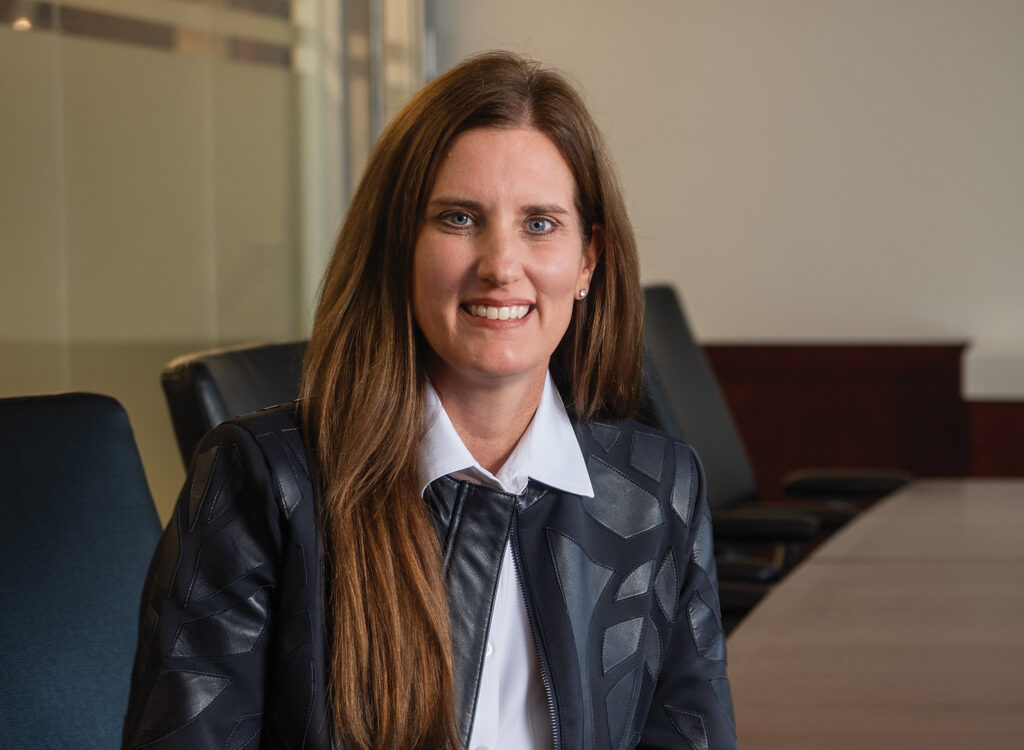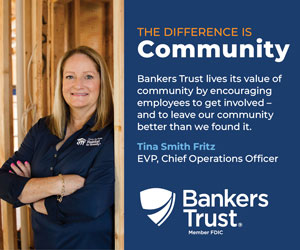Piece by piece
Mittera Group’s acquisition strategy has enabled the Des Moines-based printing company to thrive as a multifaceted communications business

JOE GARDYASZ Mar 27, 2015 | 11:00 am
9 min read time
2,133 wordsBusiness Record Insider, Retail and Business, Sales and MarketingJon Troen describes the printing industry as a “$70 billion iceberg melting at 35 degrees.” In other words, print may be shrinking somewhat, but it’s not going away anytime soon.
In an industry that’s shrinking, Troen has built Mittera Group Inc. through a series of acquisitions into the largest printing company in Iowa and a comprehensive provider of associated marketing and digital media services.
Since taking the helm of what was then Rock Communications Ltd. in 2003, Troen has led the company through nine acquisitions of printing operations, beginning with Rock Communication’s 2006 acquisition of Colorfx. Last year the company, which on Jan. 1 became known as Mttera Group, completed its largest acquisition to date when it bought Wisconsin-based J.B. Kenehan, a nearly $40 million commercial offset printing company and print finishing services company with operations in Wisconsin and Illinois.
Mittera Group has also developed separate digital, creative and data companies – Catchfire Media LLC, Sundog Studios LLC and Mittera Data and Analytics – which now operate together under one brand as MITTERA. Mittera Group’s 10 facilities employ nearly 750 people ranging from printing press operators, bindery and shipment specialists to online advertising associates, designers, photographers, videographers and data scientists.
And Troen continues to keep an eye out for additional pieces that fit into the company’s growth strategy.
“It only makes sense for us to expand geographically, and frankly some of our customers are expanding in such a way that it’s important for us to expand geographically to keep up with their growth,” he said. “We’re very fortunate we’ve been able to partner with a lot of folks who are successful. My great challenge is to make sure we don’t have any (client) outgrow us. We haven’t yet, and I don’t plan on letting that happen.”
A critical deal
A native of Newton, Troen graduated from the University of Iowa and worked as an investment banker in Chicago before going on to earn an M.B.A. from Harvard Business School in 2003. When he returned to Iowa, Troen joined his in-laws’ family-owned company, Rock Communications, as vice president. A couple of years later as president, he led the company through its first acquisition, Des Moines-based Colorfx.
“When Rock Communications bought Colorfx, that was a critical deal for our business model, frankly because it was the first one,” Troen said. “We’ve done nine so far since then, but I remember the talk at the time was, we have to make sure we get the first one right because if the first one’s wrong, there won’t be a second one. Colorfx was one of the larger ones we did – it was the company that proved out our business model.”
Though the printing industry as a whole is shrinking, it’s a mature industry that still has tremendous staying power, Troen said.
“We saw great potential in the printing industry in that there are still a lot of wonderful companies filled with uniquely talented people doing great work for great customers,” he said. “It’s just an industry that’s not growing like it used to; in fact, it’s shrinking. That scares a lot of people away, and it has a lot of folks changing their business models in how they stay viable. What we saw was the chance to look at the opportunities in that industry. It’s shrinking, but it’s shrinking very slowly and very predictably. And there is still a lot of really important work to be done for clients.”
Finding the right fit
In each of the company’s acquisitions, Troen and his team have stuck with a strategy that revolves around finding “companies with great employees serving great customers” as pieces that added value to the organization.
“Right from the beginning, we were very careful, and even to this day, we’re cautious,” Troen said. “We don’t chase every potential deal that’s out there; we truly try to look for good fits. We try to look for opportunities where we can add unique value and their teams can add value to the teams we have. We don’t chase. I think from the first conversations that we had with Colorfx, it was three years really just introducing ourselves and two years really getting the deal nailed down. That’s one of the benefits we have in being private. We’re not like a private equity company that has to move on to the next thing. A lot of the folks we do transactions with, it’s a long-term process; you only get to sell your company once, and we want to make sure it’s the right time for the seller just as much as for us.”
Another key principle Mittera has followed: Respect the strengths of the companies you’re acquiring.
“We don’t come in with a business model that says, ‘We know how to do everything right; we bought you, so let us tell you how to do your jobs.’ We’re buying companies because they have uniquely talented people doing great things for their customers. We want them to continue to do that. By all means, we share best practices and look for ways to help each other and how do you make one plus one equal three, but we don’t come in with a heavy-handed approach.”
Troen said he recognizes the value that talented employees and managers bring to the mix, and that’s reflected in how his company approaches acquisitions as well.
“I look at it as a strength that we have as a private company that we can take the long view,” he said. “We don’t have to cut unique people because we have quarterly numbers to meet.”
When the company acquired Colorfx, for instance, employees in Newton were given the option to move to Des Moines or to stay in Newton and retrain in new positions.
“I think probably 80 percent of the folks wanted to stay in Newton and learned different jobs, and a few folks actually moved and learned how to run new equipment,” Troen said. “We’ve gone through that process several times with other acquisitions. When you come back to our core philosophy, what makes these companies attractive is great people taking care of great customers. The last thing you want to do is run off a really important part of that equation. It’s a philosophy that I think the folks on our team can embrace because they understand in our industry, I can’t promise that that you can keep the job you have now forever. The nature of our industry is that you have to embrace change.”
New channels
Effective Jan. 1 of this year, Mittera consolidated its three nonprint divisions – Catchfire Media, Sundog Studios and Mittera Data and Analytics – under the umbrella of its new data services division called MITTERA. With that change, each of the three individual brands has been discontinued.
“As marketing continues to evolve, new channels continue to pop up, but old channels aren’t going away,” Troen said. “It’s not like you can say, ‘We were printing, but now we’re going to turn off all the printing to focus on our website.’ And we’re not going to turn off our website and focus exclusively on mobile because people are migrating from their desktops to their phones. You continue to have to do all of it. That was part of the driver behind the consolidation of our nontraditional media services into MITTERA, so you could get that all under one roof.”
The majority of Mittera Group’s $135 million in combined annual revenues still comes from the print side of the business, and about 650 of its 750 employees work in print versus the digital division, Troen said.
“Having said that, the organic growth rate of the nonprint business continues to be faster than the organic growth rate of print, which is no surprise,” he said. “But printing is keeping up just fine too. We have a lot of customers whose effective digital and nonprint campaign has led their companies to grow, which actually increases print dollars. Some folks have cut back on print to spend more on digital; it really is customer-specific.”
Mittera Group has had a few large customers that have experimented with dropping their print promotions altogether in favor of an all-digital approach, said Perry Klein, vice president of new business and sales. It didn’t work for them.
“Now they’ve come back to print,” Klein said. “So we’ve had a couple of scenarios where customers have tried it, and they know that they have to do both communication channels to keep their customers happy.”
When Mittera Group launched Catchfire Media to focus on digital products, mobile wasn’t even in the picture, Troen noted. “In just five years, mobile has become one of the most important parts of the digital story,” he said. “So we’re not telling people what five years from now may look like. What we are doing is making sure we’re preparing so that no matter what the most effective marketing tools are, we’re in a position to offer them.”
The company’s breadth of services enables it to be agnostic in its recommendations to clients, Troen said.
“In other words, if you’re a printing company, it’s very easy to say, ‘The best answer is print, no matter what,’ ” he said. “Sometimes the best answer is print, sometimes it’s not. At the end of the day, what we want is our customers to be more successful – how do they raise more money if they’re a nonprofit or sell more product if they’re a retailer. It’s a much better position to be in terms of partnering with customers instead of being purely a commodity that only focuses on one thing.”
Women’s group provides new opportunities, exposure
In an industry that’s historically been male-dominated, Mittera Group Inc. is making strides in creating greater gender balance and promoting new leadership opportunities for women.
This past fall, a group of female employees launched a women’s group that’s generating a lot of excitement within the organization.
The idea for the women’s group was sparked by a conversation between May DeHaan, Mittera’s director of strategic analysis, and Katie Miller-Smith, director of digital marketing, whom DeHaan meets with weekly to mentor.
“We got to discussing one day how recently we’ve had several women move up into leadership roles,” DeHaan said, “and we recognized there was now this kind of void in our bench strength. As we were discussing that, we thought, how could we impact that?”
The women’s group is exciting, CEO Jon Troen said, “in that it’s not something I’m creating. It’s come up from within the organization. That is an important part of who we are today, and it’s going to be a critical part of who we are for the next 20 years.”
Troen said that when he was just getting into the printing industry 12 years ago, there were no women at all working on the printing plant floor; now, there are women in the company training to be press operators. Currently, about 40 percent of Mittera’s 750 employees are women, and women make up nearly half of the leadership team, Troen said.
DeHaan started the group by asking the leadership teams across the organization to identify high-potential women at all levels who would be open to sharing their opinions about issues of concern at all Mittera locations. About 20 women participated in the first meeting, from which the group brainstormed a list of about five major categories of issues to begin addressing.
“Through the brainstorming, we learned that we were growing so fast and adding new locations and facilities that we really didn’t have the networking and communication and exposure across the organization we felt that we need,” DeHaan said. “So one of the immediate things was how to improve communication and show what kind of opportunties are available across the company.”
Some of the topics the women’s group is addressing include starting a formal mentoring program as well as new-employee onboarding and volunteer opportunities.
“We’ve had really very little discussion about women-specific issues,” DeHaan said. “But what the group has done has empowered the women to take ownership in our ideas and intitiatives and design solutions and implement them. So they get to see these ideas develop, and they get real-life exposure across our organization.”
In an effort to expand the group, each participant was asked to bring a female guest to the next meeting in April, which drew an enthusiastic response.
“We have the momentum to really effect change in the organization,” Miller-Smith said. “What I’ve witnessed already is that it’s strengthening connections and resources wihtin the organization overall. You’ve gotten to know someone at a deeper level through these discussions, and it’s positively impacting your daily job and who you reach out to and how you get things done.”










